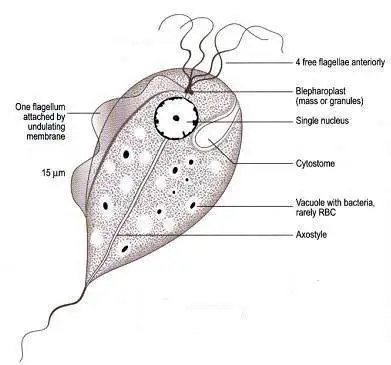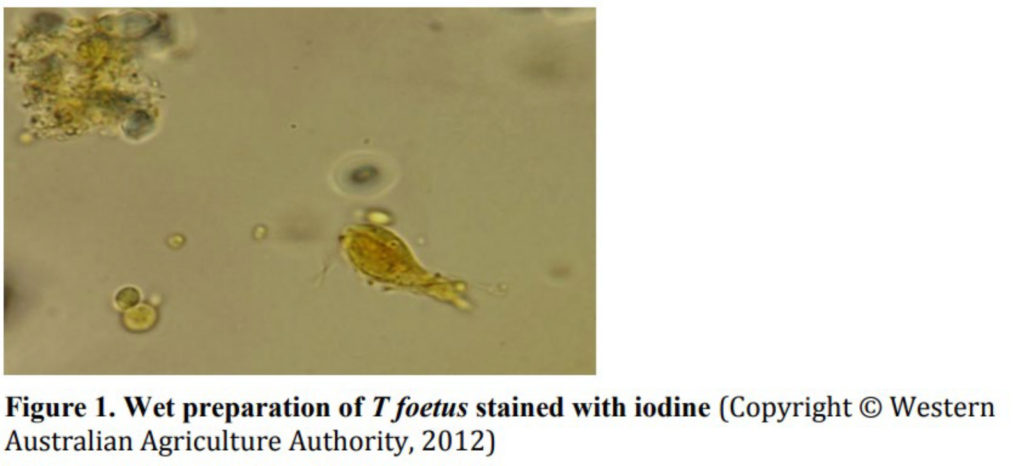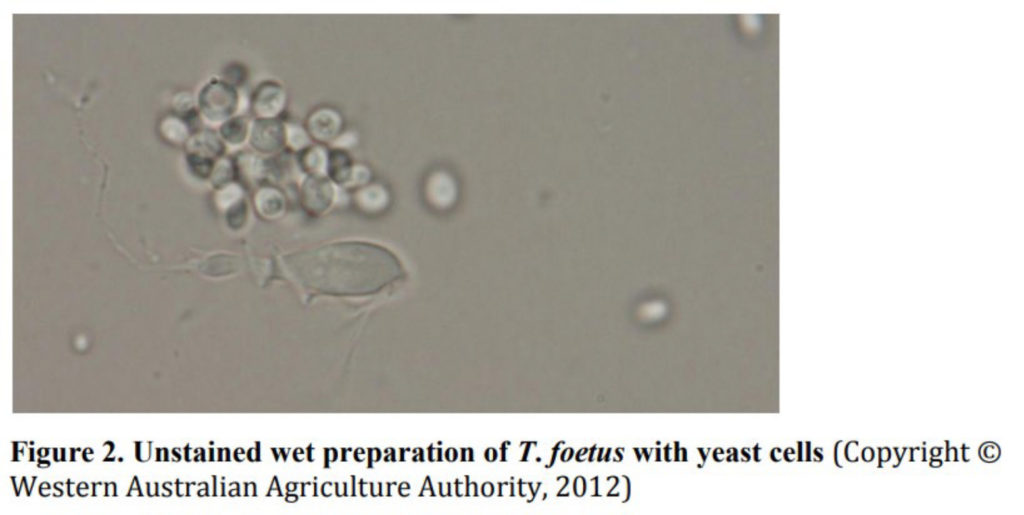 What is Trich and why does it matter?
What is Trich and why does it matter?
It is a venereal disease of cattle caused by Tritrichomonas foetus. It causes infertility, open cows, and abortions in cows and heifers. It can be financially devastating and costly to eradicate from a herd. Trich is a mobile, complex, three-flagella, protozoan called Trichomoniasis foetus. The organism survives in microscopic folds of skin that line the bulls’ penis and internal sheath.
Some of the symptoms of Trich may include:
- Reduced calf crop
- Excessive numbers of cycling cows after the bulls have been pulled (a lack of feed can also mimic these symptoms)
- Lower percentage of pregnant cows at preg check
- Pyometra (pus in uterus)
- Abortion (usually by 4 months). We usually do not see aborted fetuses but may see a string of placenta hanging from the vulva or a gummy residue on the back and sides near the vulva.
Causes of Trich can occur from a number of things. First, an infected bull or cow is turned into a clean herd, or a cow or bull from a clean herd is turned into an infected herd, and then both return to their herd of origin, spreading the disease. Other causes include running cattle on public lands with other producers, bad fences, increased cattle movement, or purchasing or leasing positive bulls or cows. A Trich infection never occurs spontaneously. If a herd has been negative and turns positive, it can only come from an infected cow or bull.
Trich is transmitted only by breeding. Bulls riding each other cannot transmit Trich from one bull to another. Either an infected cow or bull can be a transmitter. Some young bulls may be able to clear the infection over time.
Testing for Trich should be part of your annual herd health plan. Testing methods include a sheath sample (Preputial scraping), a Trich pouch into lactated ringers solution and then into a Trich pouch for incubation/transport, or lab confirmation by culture or PCR. Pooled samples of 3-5 pouches are ok in Nevada only, they not approved for qualifying a bull for entry into California or Oregon. Prior to testing, bulls should be separated from the cows 7 to 10 days to let the Trich numbers increase. Multiple tests may be required, as the Trich numbers may vary as the immunity of the bull varies week to week.
So what can you do? Vaccination is 85% effective in helping cows clean up from abortion or infection, it is possible they may re-breed within the same breeding season, thus potentially preventing them from being open. Vaccination will not prevent Trich infection. Putting clean bulls on cows that have not been exposed is the most effective procedure for eliminating Trich from a herd quickly. Cull open cows and positive Trich bulls. If you are running cattle in a mixed herd situation, ensure your cows are bred inside controlled pastures prior to turnout to help minimize losses. There is no approved treatment to eliminate Trich from bulls. It is legal to test stray bulls with the cost to be borne by the owner of the stray bull.
There is some proposed legislation in Nevada to keep an eye on which may include, mandatory annual testing, mandatory testing for public grazing allotments, hold order to prevent movement except to harvest or if a herd tests clean, and enforcement by withholding brand inspections.
by Randy Wallstrum, DVM (Damn Vet)
(From the 2023 Cattlemen’s Update Presentation)



